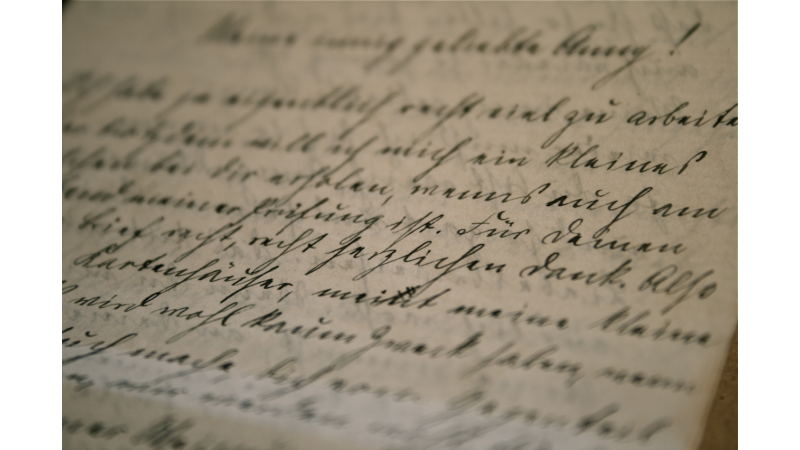 You have likely read several recent articles proclaiming the death of handwriting. Many possess rather ominous headlines (Does Handwriting Still Matter in a Digital World? Has Technology Ruined Handwriting? The Slow Death of Handwriting) as they predict the inevitable extinction of the written word. As more schools are moving away from written tests and projects towards their digital counterparts, and more children are reliant on smartphones and tablets to function and participate in their everyday lives, I don't blame the general public for assuming the handwritten word is a thing of the past.
You have likely read several recent articles proclaiming the death of handwriting. Many possess rather ominous headlines (Does Handwriting Still Matter in a Digital World? Has Technology Ruined Handwriting? The Slow Death of Handwriting) as they predict the inevitable extinction of the written word. As more schools are moving away from written tests and projects towards their digital counterparts, and more children are reliant on smartphones and tablets to function and participate in their everyday lives, I don't blame the general public for assuming the handwritten word is a thing of the past.
While I fully embrace technology, I'll admit I'm a little sentimental over handwriting. And today is National Handwriting Today, so I'm going to indulge in my sentimentality for a moment.
I mean, is there anything more special than receiving a hand-written letter in the mail? I'm not sure there is. I love the feeling of breaking the seal of a paper envelope. I love the way the wet ink can get smudged by a fist or careless finger (especially if the letter's author is a lefty). I love the difference in the way my name looks when my mother writes it compared to when my father writes it. And words like sincerely, yours truly, fondly—these lovely words that precede the letter-writer's signature and often make you feel a little tearful and dreamy—they are meant to be written by hand. Sure, a text message from a friend makes me smile, but a letter, I treasure.
Our handwriting makes us who we are. I could recognize my sister's handwriting as quickly as I could pick her out in a lineup of one hundred people. A friend of mine who is outspoken and gregarious writes in enormous, thick print. My 85 year-old grandmother writes in sprightly fits and starts. My mother, a music teacher, in perfect, evenly-spaced script, as if she's writing musical notes in a score. Elvis Presley was known for having restless and disorganized handwriting, Charles Dickens' was graceful and stylish, while Princess Diana's was soft and restrained. These are interesting facts given what we know to be true about these icons' personalities.
There is something so intimate and personal about the physical act of writing. Seeing someone's penmanship for the first time in a relationship is like opening a tiny window into their soul (your question marks look that that?). Seeing a child successfully write his or her name correctly after agonizing over getting it right is a gift. He points to his name and he is beaming and his eyes meet yours and for a moment you are powerless. The artifacts of our lives—love letters, Christmas cards, grocery lists, prescriptions, reminders scribbled on Post-it notes—so much can be said about the written miscellanea we collect, discard, keep, create.
I have many wonderful memories I associate with handwriting. When I was little, I used to confuse my lowercase "d's" and "b's". This frustrated me beyond belief, so I used to write in all caps to avoid the mistake. That is until a wonderful (albeit stern) teacher of mine took the extra time to practice with me. I was back to writing in lowercase with confidence soon after.
I learned to write in cursive at my kitchen table using crayons on newspaper. My father used to spread the pages he'd finished reading out in front of us, and my siblings and I would practice our loops and curves, our elbows smudged in ink by the end of an afternoon.
The notion that students of the future will not be taught to prioritize handwriting is sad to me, though I like to think it will somehow persevere. If you disagree, please not today.
Finally, here's a special handwritten message from the OOM team:
For additional thoughts on handwriting, check out:
Cursed or Cursive? by Suzanne McCabe
The Vanishing Art of Handwriting - CBS News
Has Technology Ruined Handwriting? - CNN
Image by klepas.





